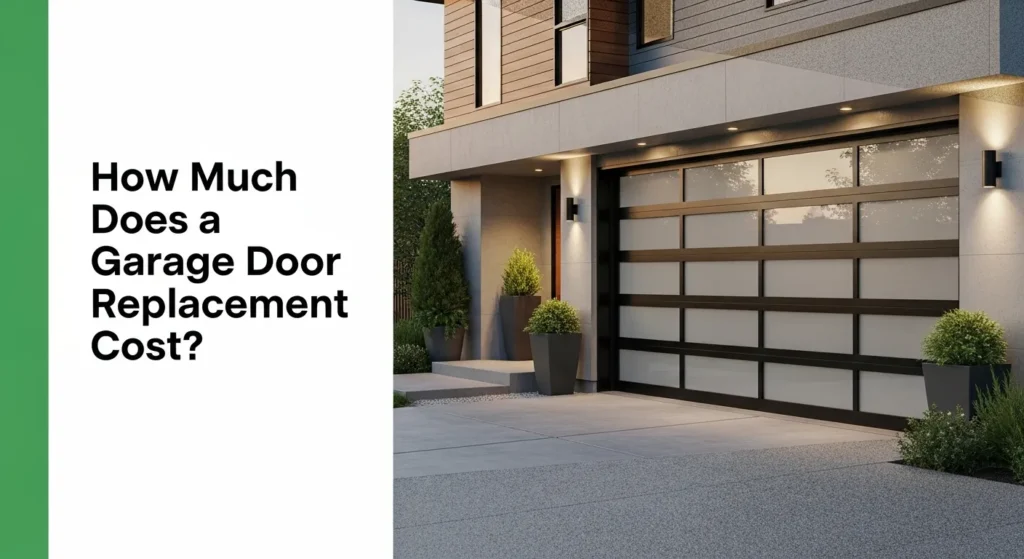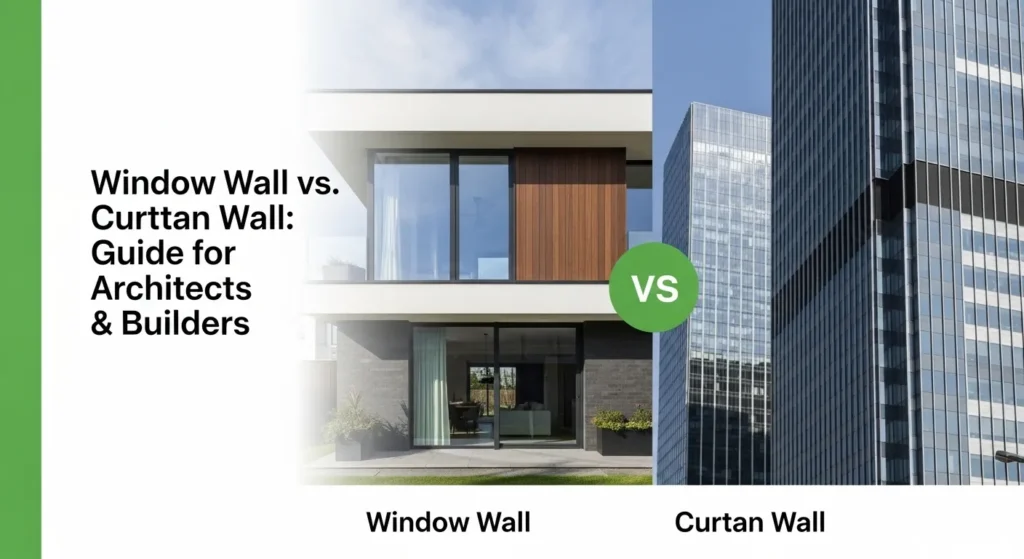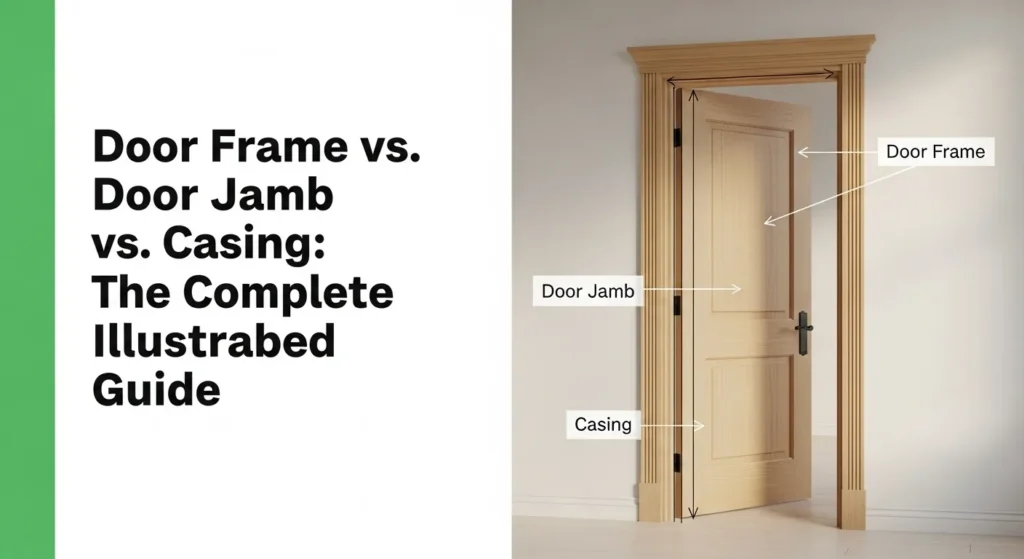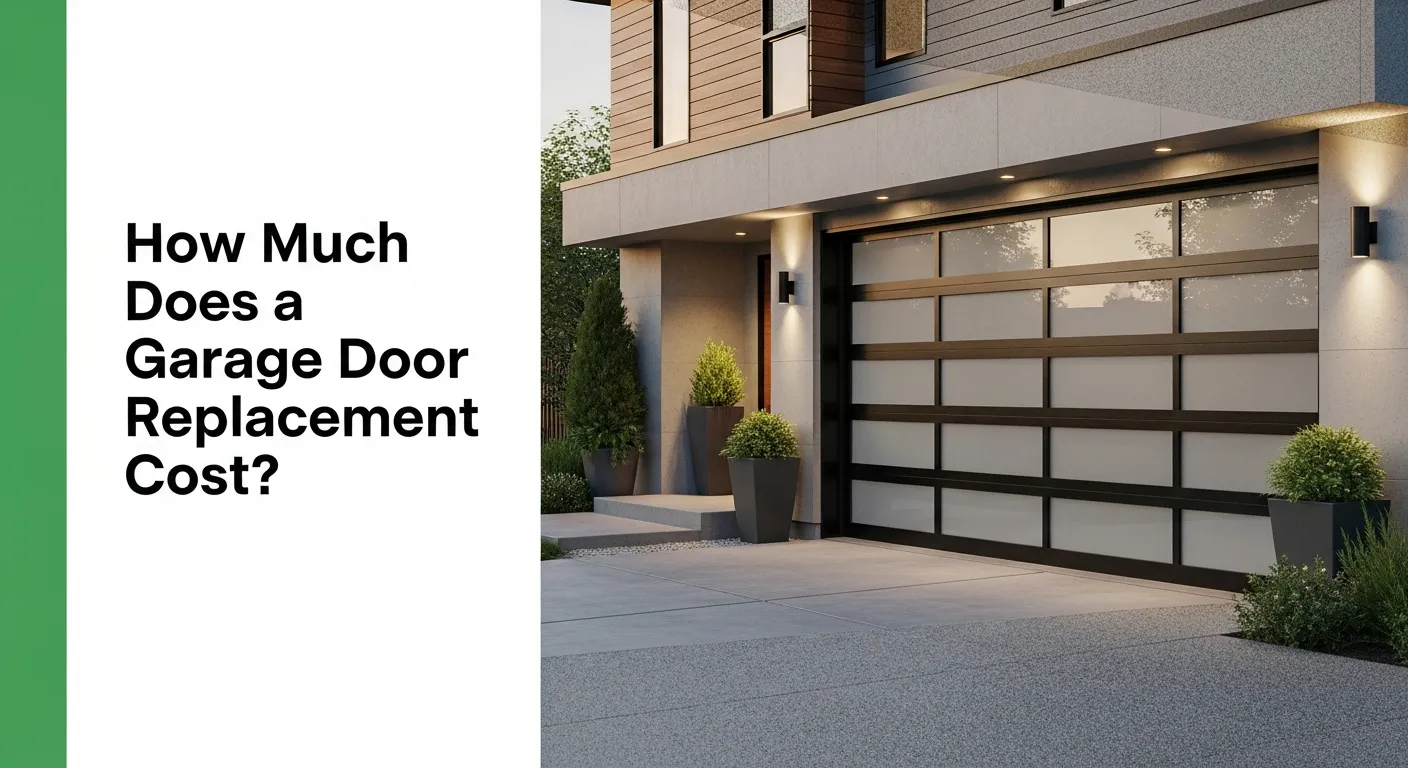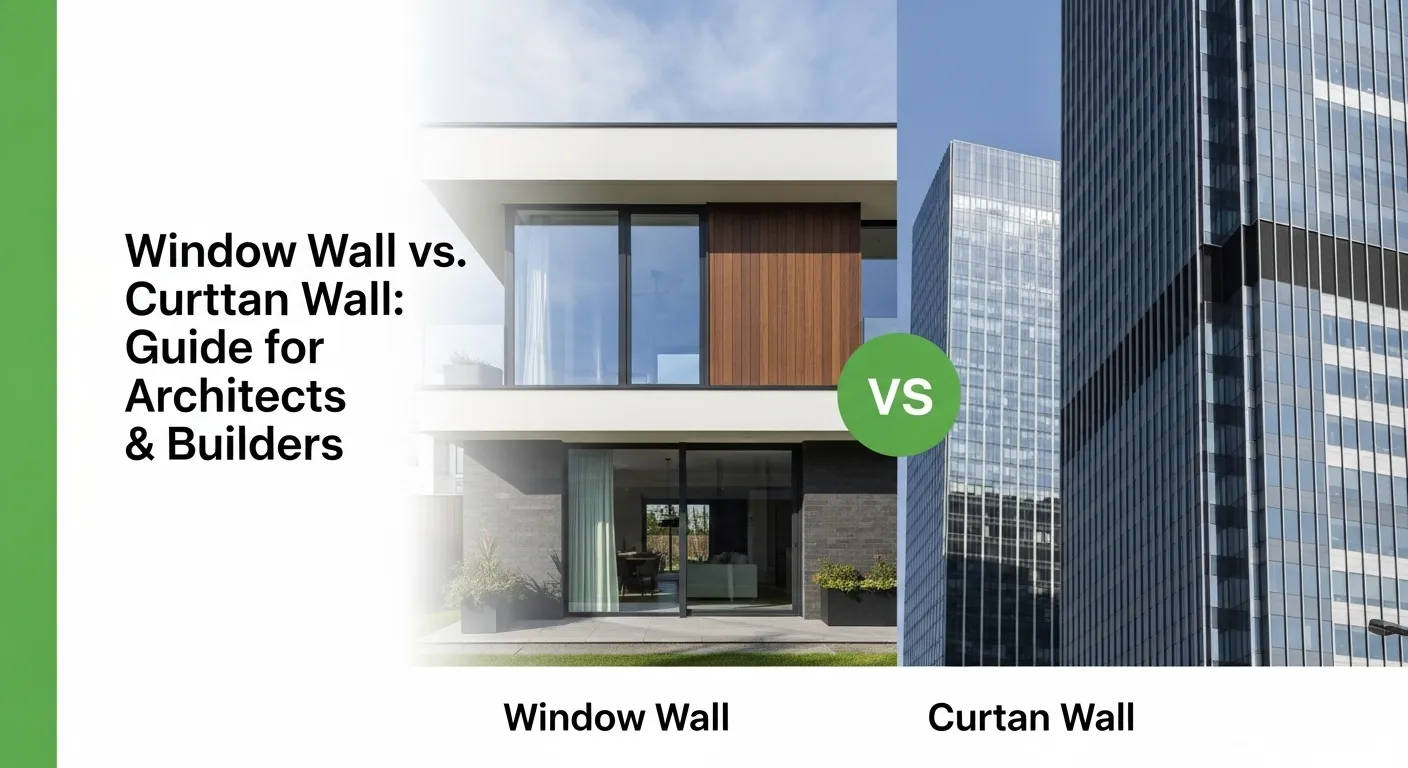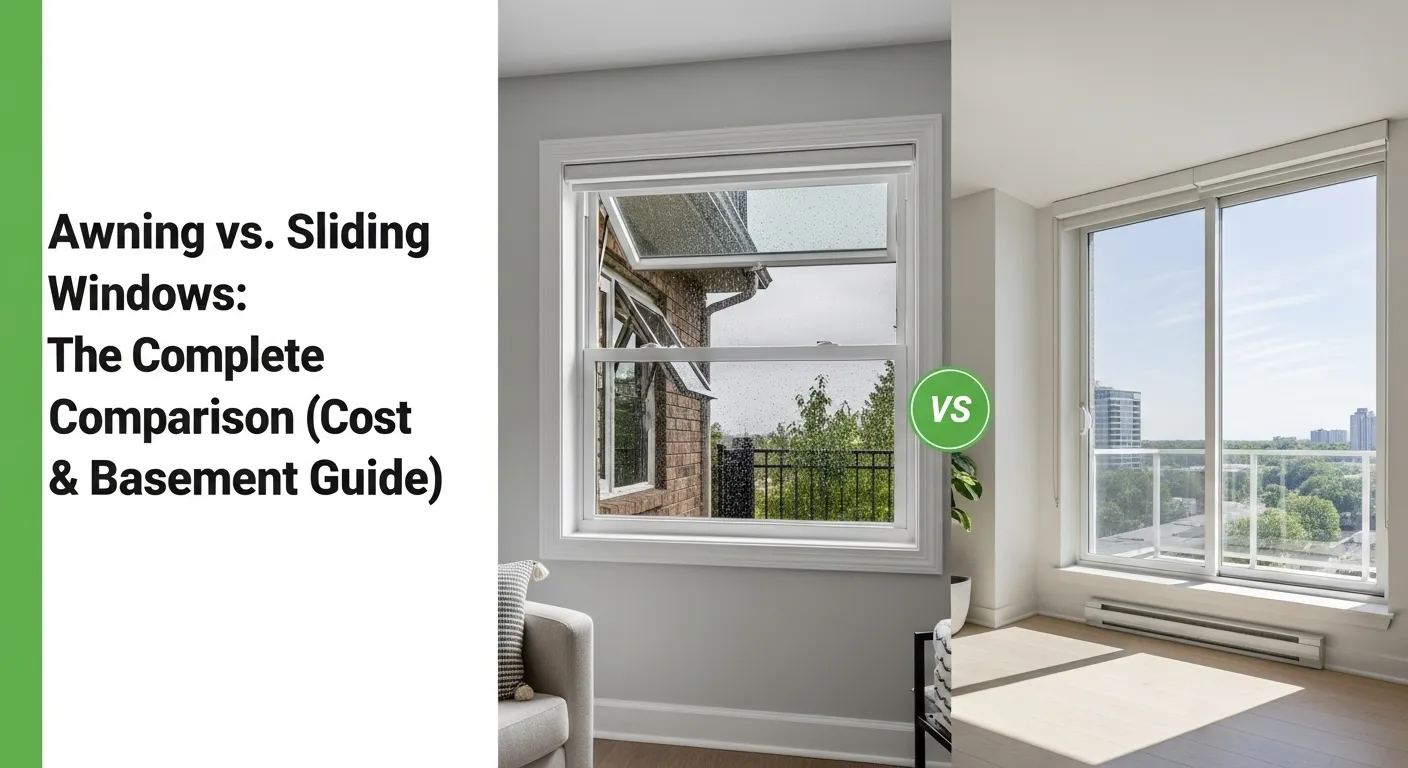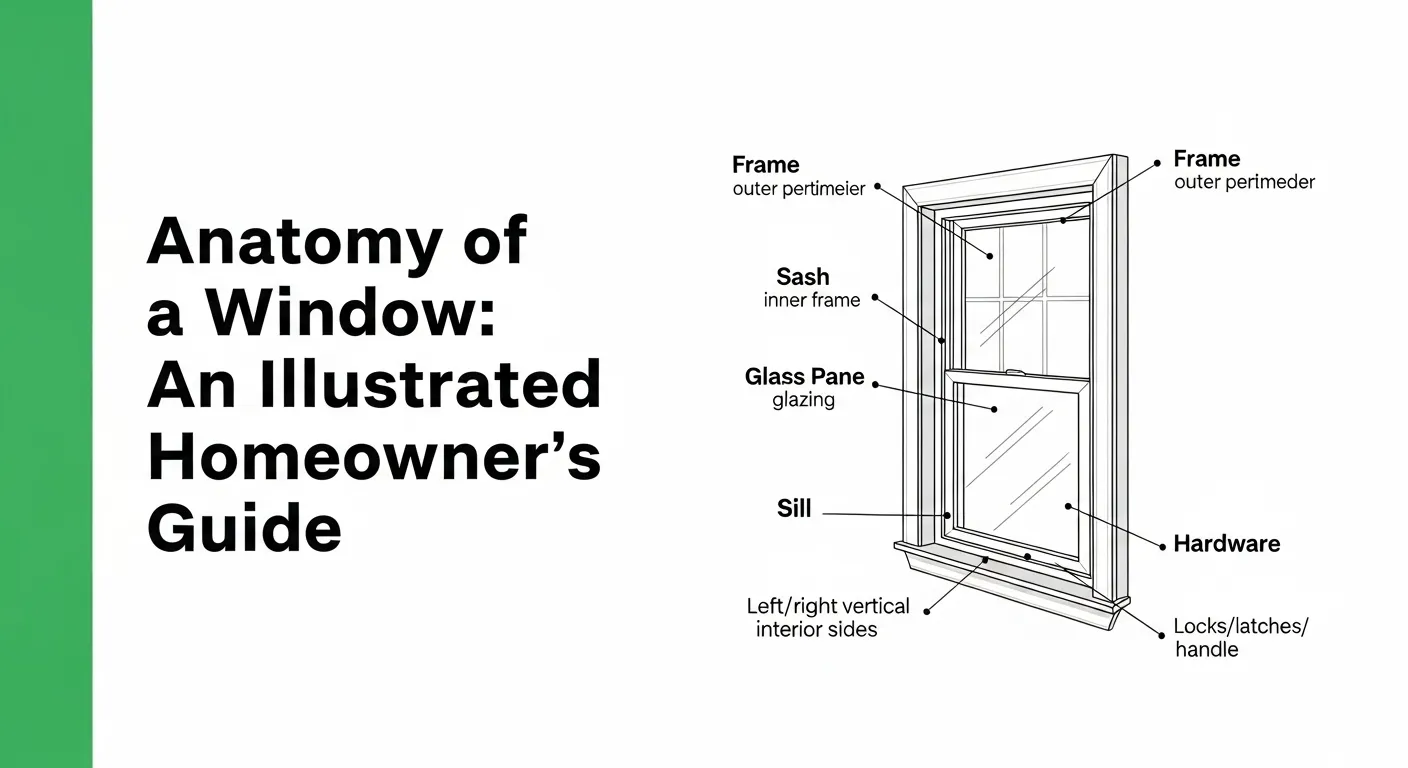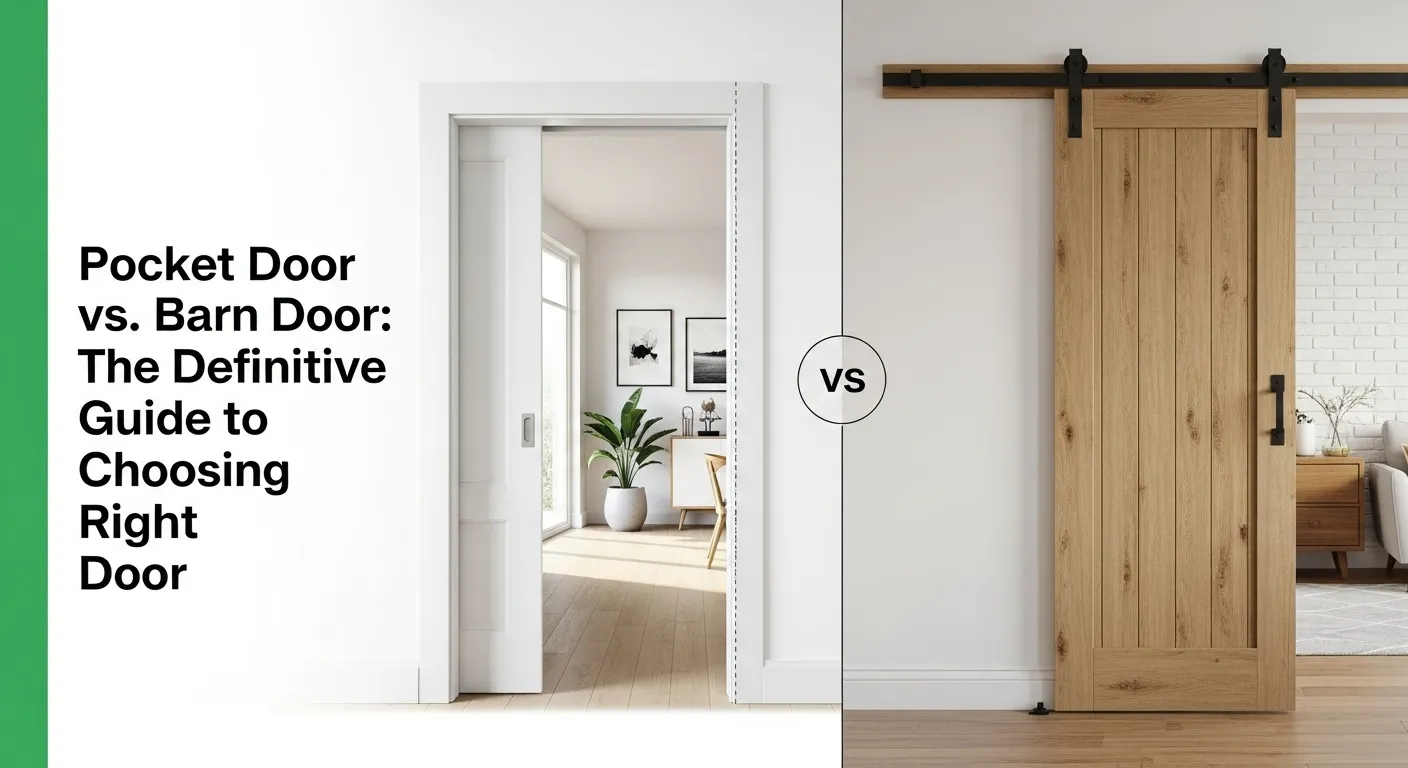Are you tired of wrestling with drafty windows every winter? Frustrated by skyrocketing energy bills? Or perhaps you’re simply exhausted from the endless maintenance cycle of scraping, painting, and repairing your current windows? If so, you’re not alone.
Millions of homeowners face these exact challenges with outdated or deteriorating windows. The good news? There’s a modern solution that addresses all these issues: vinyl windows.
Vinyl windows represent one of the most significant innovations in residential construction over the past few decades. Made from polyvinyl chloride (PVC), these windows offer a perfect combination of durability, energy efficiency, and affordability that has made them the most popular window material choice in America today.

This comprehensive guide aims to empower you with the knowledge needed to make informed decisions about vinyl windows for your home. Whether you’re building new construction, planning a complete window replacement project, or simply exploring your options, you’ll find everything you need to know about vinyl windows—from materials and styles to energy ratings and installation considerations.
Custom vinyl windows, tailored to your home. Boost comfort and curb appeal with the sizes, colors, and glass you choose.
Customize NowUnderstanding Vinyl: The Material That Makes the Difference
The Anatomy of a Vinyl Window
Before diving into benefits and features, it’s important to understand what makes up a vinyl window:
- Frame: The main structure, made from extruded PVC (polyvinyl chloride)
- Sash: The movable part that holds the glass
- Glass Package: The window panes, gas fills, and coatings
- Hardware: Locks, handles, balances, and other operational components
Each component plays a crucial role in the window’s performance, appearance, and durability.
Benefits of Vinyl
Cost-Effectiveness & Affordability
Vinyl windows typically cost 10-30% less than comparable wood windows and about the same as quality aluminum windows. However, they offer better energy efficiency than aluminum and require far less maintenance than wood. For detailed cost comparisons between different window materials, check out our articles on wood vs. vinyl windows and aluminum vs. vinyl windows.
Durability & Longevity
Vinyl windows are built to last, with many quality products carrying warranties of 20-30 years or more. Unlike wood, vinyl resists rotting, warping, and termite damage. Unlike aluminum, it won’t corrode, pit, or flake. The color goes throughout the material, so scratches don’t show as obviously as they would on painted surfaces.
A properly manufactured vinyl window can last 15-30 years or longer, depending on climate conditions and quality of installation.
Low Maintenance
One of the biggest selling points for vinyl windows is their minimal maintenance requirements. You’ll never need to sand, paint, or stain them. Regular cleaning with mild soap and water keeps them looking new, and occasional hardware lubrication ensures smooth operation. No specialized cleaners or treatments are needed to maintain their appearance or function.
Energy Efficiency
Vinyl is an excellent natural insulator. It doesn’t conduct heat or cold as readily as aluminum, which helps reduce thermal transfer. Modern vinyl windows feature multiple chambers within the frame profiles that trap air, further enhancing insulation properties. When combined with double or triple glazing, low-E coatings, and gas fills, vinyl windows can significantly reduce heating and cooling costs.
For an in-depth look at energy efficiency features, visit our article on vinyl window energy efficiency.
Variety
Today’s vinyl windows come in an impressive array of colors, finishes, and styles. While white remains the most popular choice, manufacturers now offer various colors like tan, clay, bronze, and even black. Wood-grain finishes can provide the warm appearance of natural wood without the maintenance concerns. Additionally, many manufacturers offer different exterior and interior colors to match both your home’s façade and interior design.
Quality Matters: What to Look For in Vinyl
Virgin Vinyl vs. Recycled Vinyl
Virgin vinyl is made from newly manufactured PVC resin without previously used materials. Windows made from virgin vinyl typically offer:
- More consistent color throughout
- Better long-term structural integrity
- Superior resistance to UV damage
Recycled vinyl incorporates previously used PVC. While environmentally friendly, it may have some drawbacks:
- Potentially less consistent coloration
- May be more prone to fading or brittleness over time
- Often used in lower-cost, lower-quality windows
For optimal performance, look for windows using virgin vinyl for exterior surfaces (for UV protection) with recycled content permitted in non-exposed areas.
Vinyl Compound Thickness and Reinforcement
Not all vinyl windows are created equal. The thickness of the vinyl walls significantly impacts durability and performance:
- Wall thickness: Quality vinyl windows have frame walls at least 0.065″ thick
- Internal chambers: Multiple hollow chambers inside the frame provide structural strength and insulation
- Reinforcement: Better windows include aluminum or steel reinforcement in larger frames to prevent sagging or bowing
Look for vinyl windows that feel substantial, not flimsy or lightweight. Windows with thicker vinyl and proper reinforcement may cost more initially but will perform better and last longer.
For those wondering about the composition of vinyl windows and what sets quality products apart, our article what are vinyl windows? provides more detailed information.
Elevate your builds with custom UPVC/Vinyl windows
Get a Project EstimateWindow Styles: Finding the Perfect Fit for Every Room
The Basics: Common Window Types
Double-Hung Windows
Double-hung windows feature two operable sashes (the parts holding the glass) that slide up and down. Benefits include:
- Easy cleaning from inside your home (both sashes tilt in)
- Flexible ventilation options (open top, bottom, or both)
- Traditional appearance that works with most architectural styles
- Good choice for bedrooms and common living areas
Slider Windows
Slider windows operate on a horizontal track, with one or more sashes that glide side to side:
- Simple operation with fewer mechanical parts
- Excellent for wide, short openings
- Unobstructed views with less frame visible
- Perfect for spaces where an outward-swinging window isn’t practical
Casement Windows
Casement windows are hinged on one side and open outward like a door:
- Provide maximum ventilation (100% of window area can open)
- Excellent energy efficiency due to tight seal when closed
- Enhanced security with hook-shaped locks embedded in the frame
- Great option for kitchens, bathrooms, and areas needing extra ventilation
Awning Windows
Similar to casement windows but hinged at the top, awning windows open outward from the bottom:
- Can remain open during light rain (the awning effect keeps water out)
- Often used in basements or high on walls
- Work well in combination with picture windows for added ventilation
- Good choice for bathrooms or other humid areas
Picture Windows
These fixed, non-opening windows maximize views and natural light:
- Most energy-efficient option (no moving parts means no air leakage)
- Provide unobstructed views and maximize daylight
- Often combined with operable windows for a balance of view and ventilation
- Ideal for living rooms or areas focusing on scenic views
Decorative & Functional Styles
Bay & Bow Windows
These windows project outward from your home’s exterior wall:
- Bay windows typically feature three windows: a large center picture window with smaller windows (often casement or double-hung) on each side
- Bow windows use four or more window panels arranged in a gentle arc
Both styles:
- Create the impression of more interior space
- Add architectural interest to your home’s exterior
- Provide panoramic views
- Often include a seating area or display shelf
Hopper Windows
Hinged at the bottom and opening inward from the top, hopper windows are:
- Space-efficient for small areas
- Excellent for basements, where wall space is limited
- Secure and energy-efficient with tight seals
- Easy to clean from inside the home
Specialty Shapes
For unique architectural details or accent pieces, consider specialty shaped windows:
- Geometric shapes (triangles, trapezoids, octagons)
- Round or half-round windows
- Elliptical or oval designs
- Custom configurations
These non-opening windows add character and can complement your home’s architectural style.
Choosing the Right Style
Room Functionality and Ventilation Needs
Consider how each room is used when selecting window styles:
- Kitchens: Casement windows work well over sinks (easy to open with one hand)
- Bathrooms: Awning or hopper windows provide privacy while allowing ventilation
- Bedrooms: Double-hung or casement windows offer required egress options for safety
- Living rooms: Picture windows combined with operable styles maximize views while providing ventilation
Architectural Style of Your Home
Window styles should complement your home’s architecture:
- Traditional homes: Double-hung windows maintain historical accuracy
- Contemporary homes: Casement and picture windows offer clean lines
- Craftsman bungalows: Multiple-lite double-hung windows preserve character
- Ranch homes: Slider windows complement horizontal lines
Climate Considerations
Your local weather patterns should influence window selection:
- High wind areas: Casement windows seal tighter as wind pressure increases
- Rainy climates: Awning windows allow ventilation during light rain
- Hot, sunny regions: Slider or picture windows with appropriate glass coatings minimize heat gain
- Cold climates: Double-hung windows with proper weatherstripping prevent drafts
The Glass Package: Your Window’s Energy Efficiency Core
Understanding Window Panes
Single-Pane (Outdated Technology)
Single-pane windows consist of just one layer of glass. While they may still be found in older homes, they’re no longer installed in new construction or quality renovations due to:
- Poor insulation properties
- Significant heat loss in winter and heat gain in summer
- Susceptibility to condensation and freezing
- Minimal sound insulation
Double-Pane Windows
The current standard for energy-efficient windows, double-pane units feature:
- Two layers of glass with a sealed air space between them
- Argon or krypton gas fills that insulate better than air
- Warm-edge spacers to reduce heat transfer at edges
- Approximately twice the insulation value of single-pane windows
Triple-Pane Windows
For maximum energy efficiency and comfort, triple-pane windows offer:
- Three layers of glass with two insulating gas-filled spaces
- Superior thermal performance (approximately 20-30% better than double-pane)
- Enhanced sound reduction (ideal for urban environments or noisy areas)
- Better condensation resistance in extreme cold
- Higher cost but potential for greater long-term energy savings
Low-E (Low-Emissivity) Coatings
Low-E glass features microscopically thin, transparent metal or metallic oxide layers that:
- Reflect infrared (heat) energy while allowing visible light to pass through
- Reduce heat transfer through the window
- Come in various formulations optimized for different climates
In winter, Low-E coatings reflect heat back into your home. In summer, they reflect the sun’s heat outward, keeping interiors cooler. They also block up to 95% of damaging UV rays that can fade furniture, flooring, and artwork.
For more detailed information about Low-E coatings and energy-efficient glass options, visit our article on vinyl window energy efficiency.
Spacers: The Unsung Heroes of Window Performance
Spacers separate multiple panes of glass and play a crucial role in energy efficiency:
- Traditional aluminum spacers conduct heat, creating a “cold edge” effect
- Warm-edge spacers use less conductive materials (stainless steel, structural foam, or composite materials)
- Benefits of warm-edge technology:
- Reduced heat transfer around window edges
- Better resistance to condensation
- Improved overall window insulation
- Extended seal life and durability
Energy Efficiency Ratings Explained (NFRC)
The National Fenestration Rating Council (NFRC) provides standardized ratings for windows:
U-Value (U-Factor)
Measures how well the window prevents heat from escaping:
- Lower numbers indicate better insulating properties
- Range typically from 0.20 to 1.20
- Look for U-values of 0.30 or lower in colder climates
- For optimal energy efficiency, aim for U-values under 0.25
Solar Heat Gain Coefficient (SHGC)
Indicates how much solar radiation passes through the window:
- Scale of 0 to 1 (lower numbers mean less solar heat transmission)
- Northern climates: Higher SHGC (0.40-0.55) captures beneficial winter sun
- Southern climates: Lower SHGC (0.25-0.40) reduces cooling costs
Visible Transmittance (VT)
Measures how much visible light passes through:
- Scale of 0 to 1 (higher numbers mean more light transmission)
- Typical values range from 0.30 to 0.70
- Balance natural lighting needs with potential glare issues
- Low-E coatings can reduce VT slightly
Air Leakage (AL)
Quantifies air infiltration through cracks in the window assembly:
- Measured in cubic feet of air per minute per square foot of window area
- Lower numbers indicate less air leakage
- Look for ratings of 0.30 or lower for good performance
- Quality vinyl windows typically achieve excellent air leakage ratings
Energy Star® Certification
The ENERGY STAR program, administered by the U.S. Environmental Protection Agency, certifies windows that:
- Meet strict energy efficiency guidelines for specific climate zones
- Are independently tested and certified
- Can save significantly on heating and cooling costs compared to conventional products
When shopping, look for the blue ENERGY STAR label and check that the window is certified for your specific climate zone (Northern, North-Central, South-Central, or Southern).
Customization & Hardware: Personalizing Your Windows
Frame Colors and Finishes
Today’s vinyl windows extend far beyond basic white:
- Solid colors: White, almond, tan, clay, bronze, black
- Wood-grain finishes: Oak, cherry, walnut, mahogany textures
- Dual-color options: Different interior/exterior colors
- Painted finishes: Custom colors with special vinyl-safe paints
When considering darker exterior colors, ensure the manufacturer uses heat-reflective technology to prevent warping from solar heat absorption. For more information on painting options, see our article can you paint vinyl windows?.
Elevate your builds with custom UPVC/Vinyl windows
Get a Project EstimateGrid Patterns & Styles
Window grids (also called grilles or muntins) divide the glass into smaller visual sections:
Grid Patterns:
- Colonial: Evenly divided squares
- Prairie: Perimeter grids that frame a central pane
- Diamond: Traditional diamond patterns
- Custom configurations
Grid Types:
- Grids between glass (GBG): Installed between panes for easy cleaning
- Simulated divided lites (SDL): Applied to glass surfaces for dimensional appearance
- Removable grids: Can be taken out for cleaning and replaced
Choose a grid pattern that complements your home’s architectural style and enhances curb appeal.
Hardware Options
Hardware may seem like a minor detail, but it impacts both function and appearance:
Materials and Finishes:
- Plastic (economical but less durable)
- Composite (balance of cost and durability)
- Metal (brass, nickel, bronze, chrome, black)
Style Considerations:
- Traditional, contemporary, or transitional designs
- Matching hardware throughout the home
- ADA-compliant options for easier operation
Quality hardware ensures smooth operation and enhances security.
Additional Features
Tilt Latches
Found primarily on double-hung windows, these mechanisms allow sashes to tilt inward for:
- Easy cleaning of exterior glass from inside the home
- Simple maintenance without ladders
- Improved safety, especially for upper-floor windows
Sash Limit Locks
These security devices:
- Allow partial opening for ventilation
- Prevent windows from opening fully (child safety feature)
- Provide additional security points
- Are easily adjusted as needed
Screen Options
Modern window screens offer more than just insect protection:
- Standard fiberglass: Economical and practical
- High-visibility mesh: Less noticeable, better views and airflow
- Pet-resistant screens: Durable against animal damage
- Solar screens: Reduce heat gain and UV transmission
Installation: The Crucial Step for Performance and Longevity
The Importance of Professional Installation
Even the highest quality vinyl window will underperform if improperly installed. Professional installation ensures:
- Proper sizing and fit
- Correct flashing and sealing
- Structural integrity
- Warranty compliance (many warranties are void with DIY installation)
While DIY installation may seem cost-effective, the potential for expensive problems typically outweighs initial savings. Professional installers have the specialized tools, knowledge, and experience to handle unexpected challenges.
What to Expect During Installation
A professional window installation typically follows these steps:
- Preparation: Protecting interior furnishings, creating a clean work area
- Removal: Carefully extracting old windows without damaging surrounding materials
- Opening preparation: Cleaning, repairing, and preparing the rough opening
- Installation: Positioning, leveling, and securing the new window
- Sealing: Applying proper flashing, weatherproofing, and insulation
- Interior/exterior finishing: Adding trim, caulking, and final touches
- Clean-up: Removing debris and cleaning the new windows
- Inspection: Testing operation and verifying proper installation
Most residential installations take 30-60 minutes per window, with a typical home completed in 1-2 days.
Common Installation Mistakes to Avoid
Be aware of these frequent installation problems:
Improper Sealing/Flashing
- Inadequate or incorrectly applied flashing allows water penetration
- Poor caulking leads to air and water leaks
- Missing or compressed insulation creates thermal bridges
- Solution: Ensure installers follow manufacturer specifications for flashing sequence and materials
Incorrect Sizing/Use of Fillers
- Windows too small for openings require excessive shimming or filler materials
- Improper shimming can cause frames to bow or bind
- Over-packing with insulation can distort frames
- Solution: Accurate measurements and proper sizing before ordering
Damage to Surrounding Areas
- Careless removal of old windows can damage siding, trim, or interior finishes
- Improper handling of new windows can cause frame damage or broken seals
- Solution: Choose experienced installers with good reviews and references
How to Choose a Qualified Window Installer
Licensing and Insurance
Verify that any installer you consider:
- Has proper licensing for your state/locality
- Carries liability insurance (minimum $1 million recommended)
- Has workers’ compensation coverage for employees
- Can provide certification documentation upon request
References and Reviews
Research potential installers by:
- Requesting references from past customers
- Reading online reviews (Google, Angie’s List, HomeAdvisor)
- Checking Better Business Bureau ratings
- Viewing completed project photos
Experience with Vinyl Windows
Not all window installers have specific experience with vinyl products. Look for:
- Demonstrated knowledge of vinyl window installation techniques
- Training or certification from vinyl window manufacturers
- Several years of specific experience with vinyl products
- Familiarity with your chosen brand
Getting Multiple Quotes
Obtain at least three detailed quotes that specify:
- Window brand, model, and features
- Labor costs
- Removal and disposal of old windows
- Any necessary carpentry or finishing work
- Timeline for completion
- Payment schedule
- Warranty information
Remember that the lowest quote isn’t always the best value. Balance cost considerations with installer experience, reputation, and thoroughness.
Warranties: Protecting Your Investment
Understanding Different Types of Warranties
Vinyl windows typically come with multiple warranty components:
Frame Warranty
Covers the vinyl frame and sash components:
- Typically 20 years to lifetime coverage
- Protection against materials defects, warping, cracking, peeling
- Often non-prorated (full coverage throughout warranty period)
Glass Warranty
Addresses the insulated glass units:
- Usually 10-20 years
- Covers seal failure (fogging between panes)
- May include glass breakage (sometimes as a separate warranty)
- Often prorated after initial period
Hardware Warranty
Covers mechanical components:
- Typically 5-10 years
- Includes locks, balances, cranks, hinges
- May be shorter than frame/glass warranties
- Often replaceable under warranty via simple parts shipment
Labor Warranty
Provided by the installer (not manufacturer):
- Varies widely (1-10 years typical)
- Covers installation-related issues
- May include service calls and adjustments
- Critical for complete protection
What to Look For in a Vinyl Window Warranty
Duration and Coverage
The best warranties offer:
- Lifetime coverage on frames and sashes
- 20+ years on insulated glass units
- 10+ years on hardware
- Transferability to subsequent homeowners (adds value when selling)
- Non-prorated coverage (full value throughout warranty period)
What Voids the Warranty?
Be aware of common warranty exclusions:
- DIY installation (most manufacturers require professional installation)
- Improper maintenance (using harsh chemicals, painting with non-vinyl-safe paint)
- Structural settling or acts of nature
- Modifications to the windows after installation
- Failure to register warranty within specified timeframe
Reading the Fine Print
Pay special attention to:
- Definition of “lifetime” (your lifetime? home ownership? set number of years?)
- Transfer provisions and costs
- Prorated schedules (how value decreases over time)
- Coverage limitations (parts only vs. parts and labor)
- Claims process and documentation requirements
For a more detailed examination of warranty considerations, check out our comprehensive article on vinyl window warranties.
Top Vinyl Window Manufacturers and Brands
Overview of Reputable Manufacturers
While quality can vary within each brand’s product lines, these manufacturers consistently produce well-regarded vinyl windows:
Pella
Known for:
- Innovative features and design
- Strong warranty coverage
- Wide distribution network
- Multiple price points and product lines
Popular series: 250 Series, 350 Series
Andersen
Known for:
- Long-standing reputation for quality
- Composite and vinyl options
- Excellent customer service
- High-end appearance
Popular series: 100 Series (Fibrex composite material with many vinyl-like properties)
Simonton
Known for:
- Consistent Consumer Reports ratings
- Strong energy efficiency
- Extensive style options
- Good value for money
Popular series: Reflections, Impressions, ProFinish
Milgard
Known for:
- Regional strength (especially Western US)
- Lifetime warranties
- Made-to-order manufacturing
- Strong dealer support
Popular series: Style Line, Tuscany, Trinsic
JELD-WEN
Known for:
- Wide availability
- Budget-friendly options
- Variety of styles and configurations
- Energy Star certified products
Popular series: V-2500, Premium Vinyl
Key Features and Specialties
When researching manufacturers, note their specialized strengths:
- Energy efficiency leaders: Alside, Simonton, Soft-Lite
- Architectural/decorative options: Pella, Marvin, Andersen
- Budget-friendly quality: JELD-WEN, Ply Gem, American Craftsman
- Premium construction: Loewen, Marvin, Kolbe
Where to Find Them
Vinyl windows are sold through various channels:
- Big box stores (Home Depot, Lowe’s): Accessible but limited selection
- Window specialty retailers: Wider selection, expert advice, installation services
- Manufacturer showrooms: Direct experience with products, factory representatives
- Local building supply companies: Often carry regional brands, contractor pricing
For detailed reviews of various vinyl window brands, see our article who makes the best vinyl windows?
Precision windows for every project—unlock lasting quality and seamless delivery.
Start Your Quote NowCost Considerations and Budgeting
Factors Influencing Vinyl Window Cost
Multiple factors affect the final price of vinyl windows:
Window Size and Style
- Larger windows cost more than smaller ones
- Special shapes cost more than standard rectangles
- Operational styles (double-hung, casement) cost more than fixed windows
- Bay and bow windows are typically the most expensive styles
Glass Package
Price increases with additional features:
- Double-pane vs. triple-pane (20-30% premium for triple)
- Standard vs. premium Low-E coatings
- Argon vs. krypton gas fills
- Specialty glass (tempered, laminated, obscured)
Energy Efficiency Features
Higher efficiency generally means higher cost:
- Premium warm-edge spacers
- Enhanced weatherstripping
- Insulated frames
- Higher-performance Low-E coatings
Brand and Quality Tier
Most manufacturers offer multiple product lines:
- Entry-level (builder grade)
- Mid-range (most popular for replacements)
- Premium (highest performance and features)
Price differences between tiers can be substantial (30-50%).
Average Cost Ranges
While prices vary by location, quality, and features, these general ranges can help with budgeting:
Standard Double-Hung Vinyl Window (30″ x 54″):
- Entry-level: $150-$300 per window
- Mid-range: $300-$500 per window
- Premium: $500-$800 per window
Installation Costs:
- Standard replacement: $100-$300 per window
- Full-frame replacement (including trim work): $200-$450 per window
- Complex installations (structural changes): $500+ per window
Average Total Installed Cost (mid-range quality):
- Single window: $400-$800
- Whole house (10 windows): $4,000-$8,000
For a more detailed breakdown of costs, visit our article on vinyl window costs.
Potential for Energy Savings and ROI
Quality vinyl windows can provide significant returns on investment:
- Energy savings: 10-25% reduction in heating/cooling costs
- Increased home value: Up to 70-80% of project cost recouped at sale
- Comfort improvements: Harder to quantify but significant
- Maintenance savings: Compared to wood windows, save $100-$200 per year
Most homeowners recoup their investment through a combination of energy savings, increased home value, and reduced maintenance over 5-15 years.
Tax Credits and Rebates
Financial incentives can significantly reduce your net cost:
- Federal tax credits: Check current IRS guidelines for energy-efficient home improvements
- State/local incentives: Many states offer additional rebates or tax deductions
- Utility company programs: Local energy providers often have rebate programs
- Manufacturer rebates: Seasonal promotions from window companies
Visit energystar.gov or dsireusa.org for current incentive information.
Maintenance and Longevity: Keeping Your Vinyl Windows in Top Shape
Simple Cleaning Guide for Vinyl Frames and Glass
Regular cleaning maintains appearance and function:
Frame Cleaning
Basic cleaning (2-4 times yearly):
- Remove loose dirt with soft brush or vacuum
- Mix mild dish soap with warm water
- Clean frames with soft cloth or soft-bristle brush
- Rinse with clean water
- Dry with soft cloth
For stubborn stains:
- Make paste of baking soda and water
- Apply gently with soft cloth
- Rinse thoroughly
- Avoid abrasive cleaners, scouring pads, or harsh chemicals
Glass Cleaning
Regular maintenance (as needed):
- Spray with commercial glass cleaner or vinegar/water solution
- Wipe with lint-free cloth or paper towel
- For best results, clean on cloudy day to prevent streaking from quick drying
- Microfiber cloths provide streak-free results
For more detailed cleaning tips, especially for yellowed or oxidized frames, see our article on how to clean yellowing vinyl window frames.
Lubricating Moving Parts
Proper lubrication ensures smooth operation:
- Frequency: Once yearly or when operation becomes stiff
- What to lubricate:
- Tracks and channels
- Locks and latches
- Hinges and pivots
- Balance systems
- Recommended lubricants:
- Silicone spray (preferred for vinyl-safe application)
- White lithium grease (for metal components)
- Avoid WD-40 on vinyl components
For specific lubrication techniques, visit our guide on how to lubricate vinyl windows.
Inspection for Seals and Potential Issues
Annual inspections prevent small problems from becoming major issues:
Check for:
- Weatherstripping damage or compression
- Seal deterioration around glass
- Condensation between panes (seal failure)
- Proper drainage from weep holes
- Smooth operation of all moving parts
- Caulking cracks or separations
When to call a professional:
- Fogging between glass panes
- Difficult operation that doesn’t improve with cleaning/lubrication
- Water leakage around frames
- Visible damage to frames or sashes
Expected Lifespan of Vinyl Windows
Quality vinyl windows are a long-term investment:
- Average lifespan: 20-40 years
- Factors affecting longevity:
- Manufacturing quality
- Installation precision
- Climate and exposure
- Maintenance practices
- Color (darker colors may have shorter lifespans in intense sun)
Signs it may be time for replacement include:
- Persistent drafts despite weatherstripping replacement
- Difficult operation that cannot be corrected
- Fogging between panes that cannot be repaired
- Visible warping or damage to frames
For a deeper dive into vinyl window longevity and replacement timing, see our article on how long do vinyl windows last?
Conclusion: Your Final Checklist for Choosing Vinyl Windows
Recap of Key Benefits
Vinyl windows offer a compelling package of advantages:
- Affordability: Lower initial cost than many alternatives
- Energy efficiency: Excellent insulation properties and customizable glass packages
- Low maintenance: No painting, staining, or complex upkeep required
- Durability: Resistance to rot, corrosion, and pest damage
- Versatility: Wide range of styles, colors, and configurations
- Longevity: 20+ year lifespan with proper installation and care
Final Checklist of Questions
As you evaluate your vinyl window options, ask yourself:
About the Windows:
- Does the manufacturer have a solid reputation and history?
- What is the warranty coverage and duration?
- Are the windows ENERGY STAR certified for my climate zone?
- What are the U-factor and SHGC ratings?
- What frame thickness and reinforcement is provided?
About Installation:
- Is professional installation included?
- What is the installer’s experience with this brand?
- Is there a labor warranty in addition to the product warranty?
- How long will the installation take?
- What preparation is needed before installation?
About Your Specific Needs:
- Which window styles best match your home’s architecture?
- What level of energy efficiency makes sense for your climate?
- Are noise reduction or security features important for your location?
- Have you factored maintenance and energy savings into your budget calculations?
- Are there specific features (tilt-in cleaning, between-glass blinds) that would improve your daily experience?
Precision windows for every project—unlock lasting quality and seamless delivery.
Start Your Quote NowCall to Action: Start Your Window Replacement Journey
Now that you understand the world of vinyl windows, you’re well-equipped to make informed decisions about your home improvement project. Remember that windows are a long-term investment in comfort, efficiency, and home value.
Begin by:
- Measuring your existing windows
- Setting a realistic budget based on the information in this guide
- Researching manufacturers and local dealers
- Requesting 3-5 quotes from reputable companies
- Asking detailed questions using this guide as a reference
Whether you’re replacing a single problem window or upgrading your entire home, the right vinyl windows can transform your living space while providing decades of trouble-free service.
If you found this buyer’s guide helpful, explore our other in-depth articles on vinyl windows, including installation guides, maintenance tips, and specific product reviews. Our content is designed to help homeowners make the best decisions for their homes and lifestyles.
